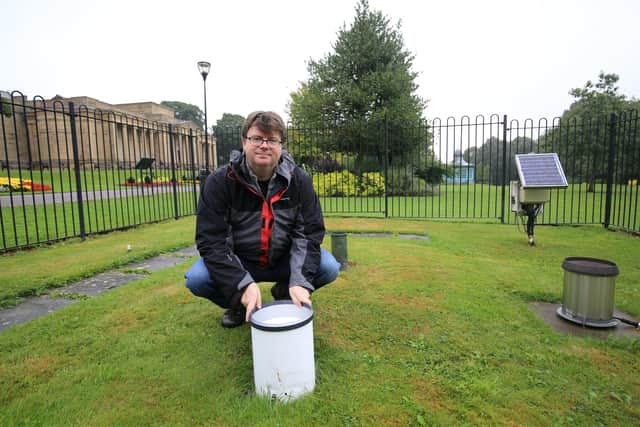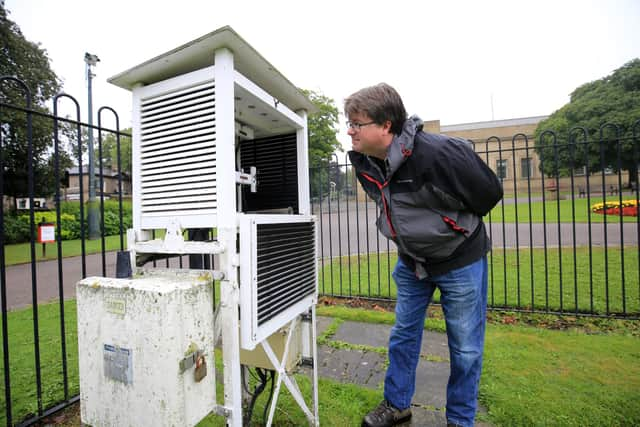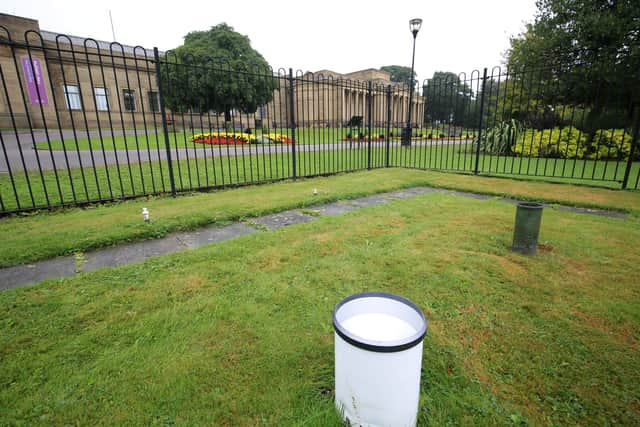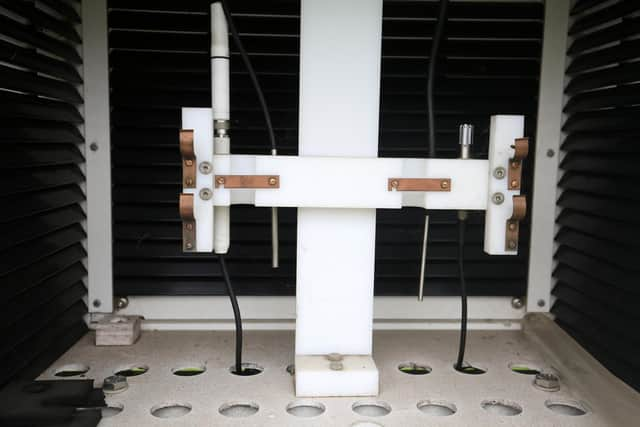How a Sheffield weather station has been used to predict the spread of infectious diseases - and played a vital role in the fight against the Nazis
and live on Freeview channel 276
But did you know it is one of the country's longest recording stations, has been used to predict dysentery outbreaks and the information was listed as classified during the Second World War?
The station was set up after the Department of Health lobbied Sheffield Corporation to install one to help the health bodies predict when outbreaks of disease were coming so medical teams could be prepared.
Advertisement
Hide AdAdvertisement
Hide AdIn September 1882 the curator of Weston Park Museum, Elijah Howarth, took up the task and was later made a Fellow of the Royal Meteorological Society.


The weather station is now on its fifth custodian, Alistair McLean, who has been at the helm since 2010.
The 43-year-old said: "I really enjoy my job it's fascinating to see how far everything has come and to be working at one of the longest serving weather stations in the country.
"It has been a team effort to get here, it's not just the meteorologists but the front of house team who used to go and measure snow with a ruler or those people who nipped in on bank holidays and weekends to ensure the readings were always taken."
Advertisement
Hide AdAdvertisement
Hide AdThe weather station was set up to spot when illness and disease were coming so the medical staff could be prepared.


Around the station there are underground thermometers at 30cm and 1m which is the depth of the water table and a rise in temperature would mean more bacteria in the water which would then lead to infections and diseases.
During the First World War Howarth's successor, Joseph Baggaley, took his knowledge of weather reading to the front line and trained others to take meteorological readings when he was unable to.
Baggaley also provided weather readings from Weston Park, classified as secret for the duration of the Second World War, to the war office. During 1940, he was asked to provide by telephone hourly wind readings between 10pm and 6am, presumably because there was intelligence that Germany intended to bomb Sheffield. This was proved accurate in December 1940 as Sheffield, and Weston Park Museum itself, was badly hit by enemy action during the Sheffield Blitz.
Advertisement
Hide AdAdvertisement
Hide AdRecording the weather has come so far since the early days back in 1882 says Alistair and the station has moved on from just daily reports to doing hourly updates from 2009.


All the data ever recorded is still accessible and the original findings have been digitised and last year the team celebrated serving the 50,000 day of weather collection.
"All the recordings are automated now which means I don't have to come in on Christmas Day which is great!"
"It has a been a big task," said Alistair, "Although it was done in the 1990s it has been redone with a new system that now allows you to compare weather on different dates much easier."
Advertisement
Hide AdAdvertisement
Hide AdAfter a quick search Alistair found the weather on August 18, 1920 was cool windy day, the maximum temperature was 15.4°C and wind was four knots from the north west.


He said having this data of the past is vital for the future.
"Since 1975 there has been more spikes of heavy rain in a short period than there ever has before hand.
"And when heavy rain occurs in a short period this leads to flooding. "We work closely with the Environment Agency as well as insurance companies and alert them when there is high winds or floods on the way.
Advertisement
Hide AdAdvertisement
Hide Ad"The accuracy of the recording has improved over time but when looking back at past records we have to factor in the consistently inconsistent readings."
Alistair added: "The information from the weather station is still relevant and so important in all aspects of modern day life.
"People might think they just got the weather on their phone but as we give our information to the Met Office they use that to make local predictions which couldn't be done without the data from our station so everything is connected."
So next time you walk past the station take a moment to appreciate all the hard work which has gone into getting the weather for the last 138 years.